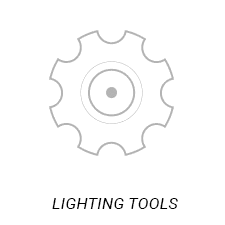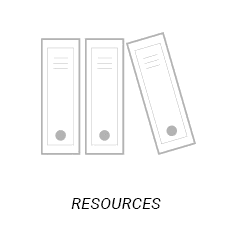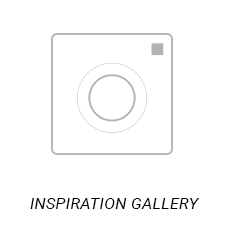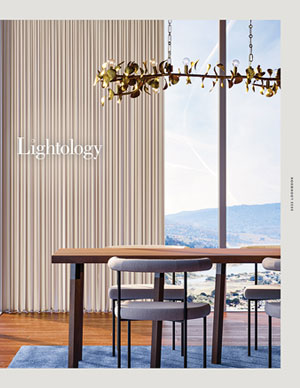Events/ Media
Effective Cove Lighting: Notes from Lightology
Dear Lightologist: How do I maximize the quality of lighting in a cove?
Answer: First off, let's establish what cove lighting is. Cove lighting uses lamps that are architecturally concealed so that surfaces are illumined in an indirect lighting system, which controls and redirects light distribution.
Here are a few bright tips on effective cove lighting to maximize the light and minimize/eliminate the shadows on your next cove project. For full details, calculations, etc. you will need to take the class "The ABCs of Effective Cove Lighting" for CEU credits (credits issued through the AIA, ASID, IIDA and NKBA); please contact Lightology for more information.
1. Choose the proper lamp source for your needs.
| Lamp Type / Properties | Cove Depth Required | Curved Cove | Color/ Special Effects | High Heat | Lamp Life (hours) | High Ceilings | Initial Cost | Lumen per Ft | Maintenance Cost | Light Output |
|---|---|---|---|---|---|---|---|---|---|---|
| Linear fluorescent (T2, T5, T8) | 6"-12" | No | No (T5 yes) | No | 10,000-24,000 | No | Low | 487 to 1500 | Low | Mid |
| Compact fluorescent | 6"-12" | Yes | No | No | 20,000-24,000 | No | Mid | up to 4800 | Low | High |
| Incandescent/ low voltage festoon | 4" | Yes | No | Some | 15,000 | No | Mid | up to 660 | Low | Mid |
| Incandescent / line voltage | 6" | Yes | No | Yes | 750-1500 | No | Low | 135-630 (T10 lamp) | High | Mid |
| Cold cathode/ electric discharge | 7" | Yes | Yes | No | up to 100,000 | Yes | Mid | up to 730 | Low | Mid |
| Fiber optic - Metal halide | 2" | Yes | Yes | Yes | 8,000 | Yes | Mid | * | Very Low | Low |
| LED Light Emitting Diode | 6" | Yes | Yes | No | 50,000-100,000 | Yes | High | RGB 250+ | Very Low | Low |
*Depends on illuminator and fiber length
2. Observe proper positioning of the lamp source to maximize light output.
Figs. 1 & 2 illustrate some common mistakes when mounting lamps within coves, producing inefficient results.

Fig. 1: Too far toward front; light trapped inside cove

Fig. 2: Too far toward rear; socket shadows, light trapped inside cove
In the vast majority of applications, standard lighting design practice for improved light efficiency calls for the lamp to be centered in the cove base, with the top edge of the lamp mounted 1" below the horizontal line of sight, even if it means using spacers to raise the lamp source to that level (Fig. 3).

Fig. 3: Standard mounting - lamp centered in cove
Line of Sight Design Technique: - only for special applications with high ceilings: for coves mounted over 9'-0" above the floor, greater efficiency results from raising the top edge of the lamp 1" above the cove fascia and then mounting the cove at the height required to block the view of the exposed lamp (i.e. - according to the actual line of sight - see figs. 4 & 5). When using this technique, great care must be taken to avoid exposing the bare lamp to the viewer; click here for details about how to determine proper cove placement. [300 KB PDF]

Fig. 4: (special applications only - cove over 9'-0" above floor) mount lamp 1" above edge of cove (click for details: 300 KB PDF)

Fig. 5: (special applications only - cove over 9'-0" above floor) mount lamp on wall, 1" above edge of cove (click for details: 300 KB PDF)
3. Observe proper positioning of the light source to minimize shadows: lamp source should be positioned at a distance of 2-6 inches from all reflective surfaces to minimize shadows (Figs. 6 - 8).
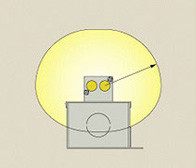
Fig. 6: fluorescent lamps
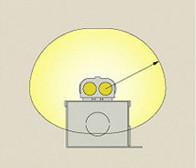
Fig. 7: compact fluorescent lamps
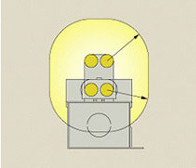
Fig. 8: compact fluorescent lamps (quad)
4. A proper interior cove surface should be matte white (painted, if necessary), making it 40% more reflective than an unfinished cove.
These ideas should get you started; please contact Lightology for more or to learn about our special cove lighting seminar. Good luck!
We also welcome your questions or ideas for future articles or seminars. Please, let us know!


